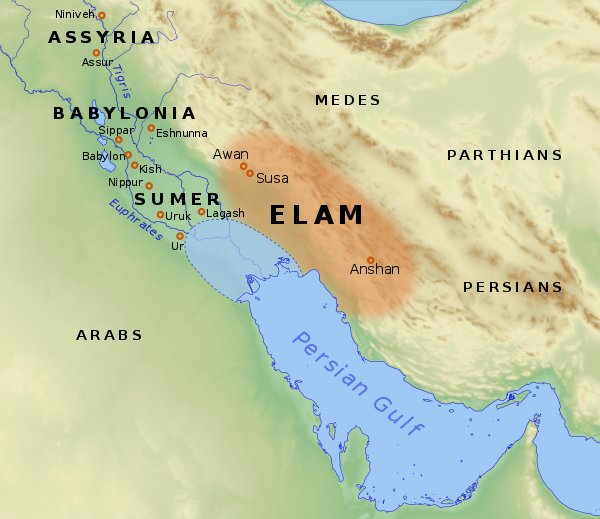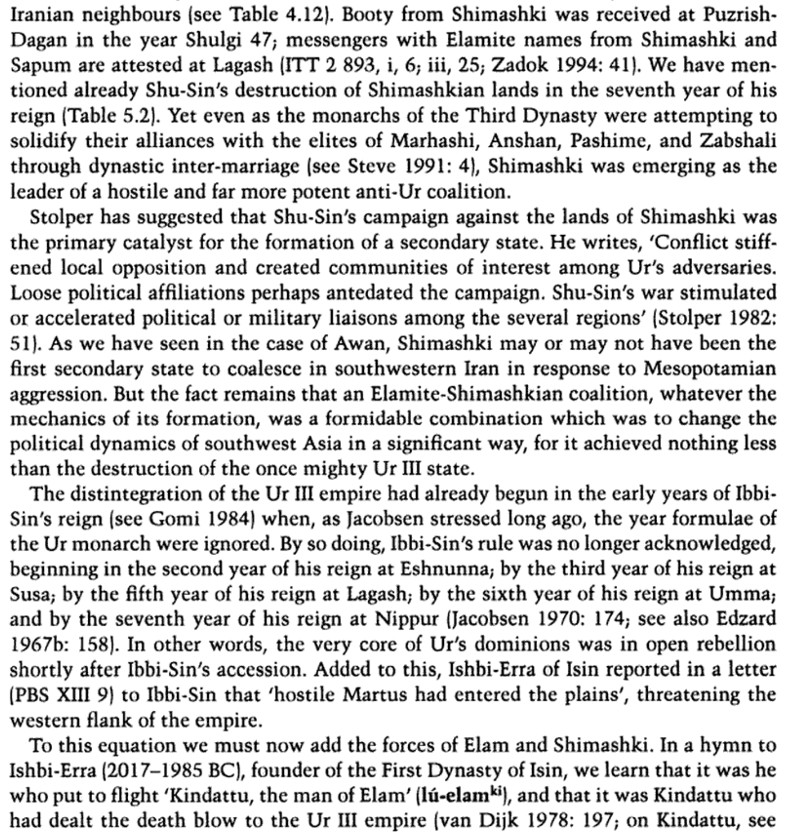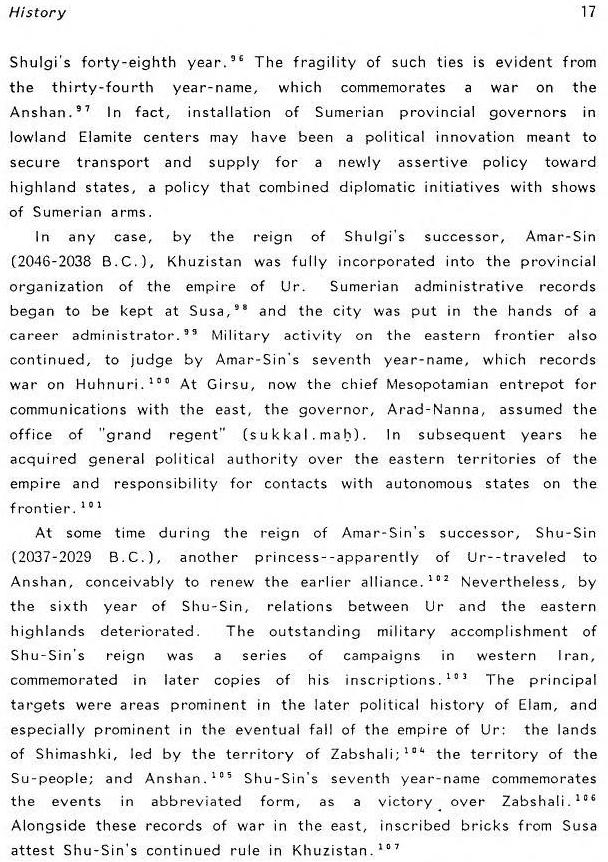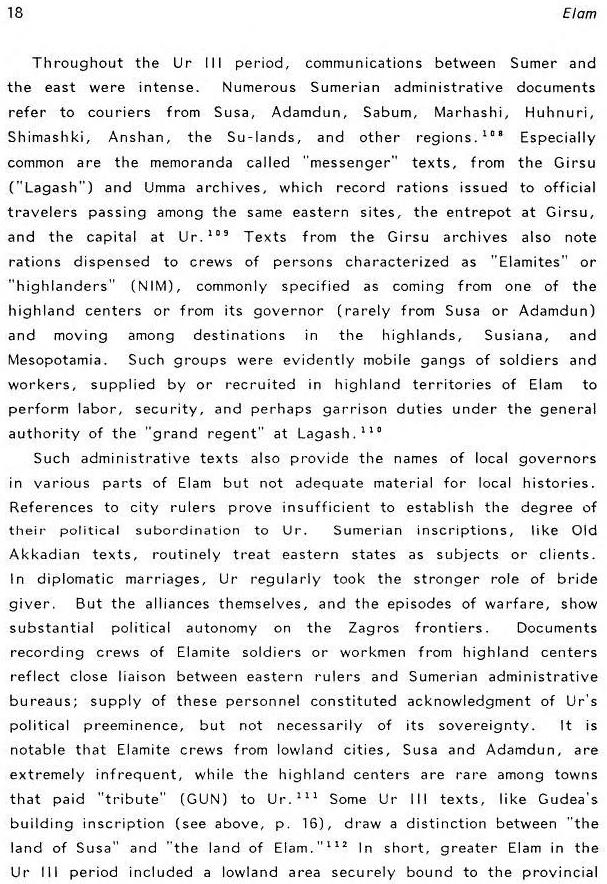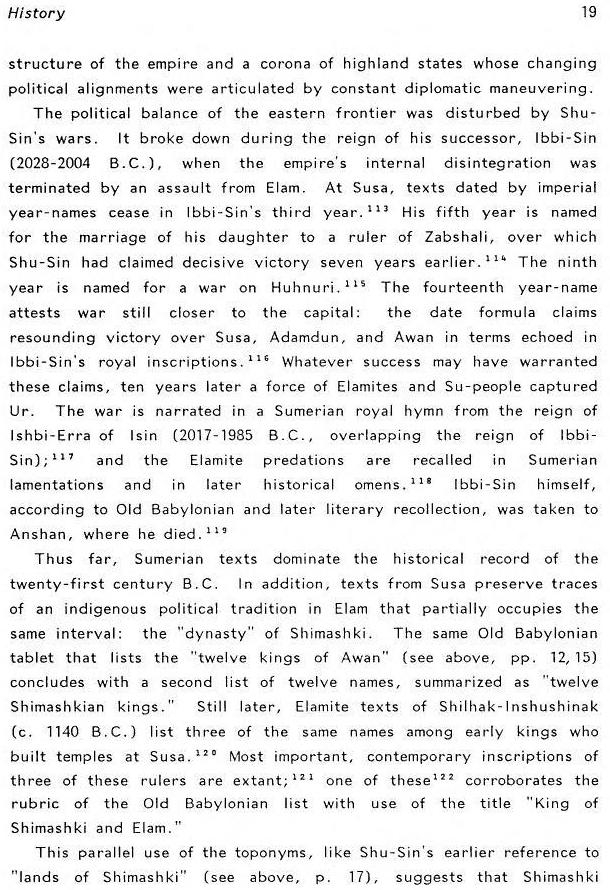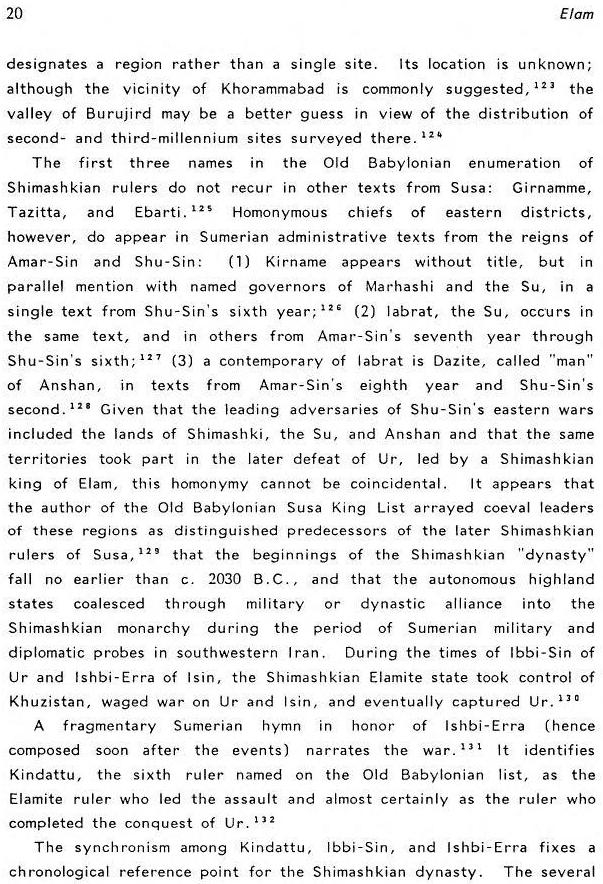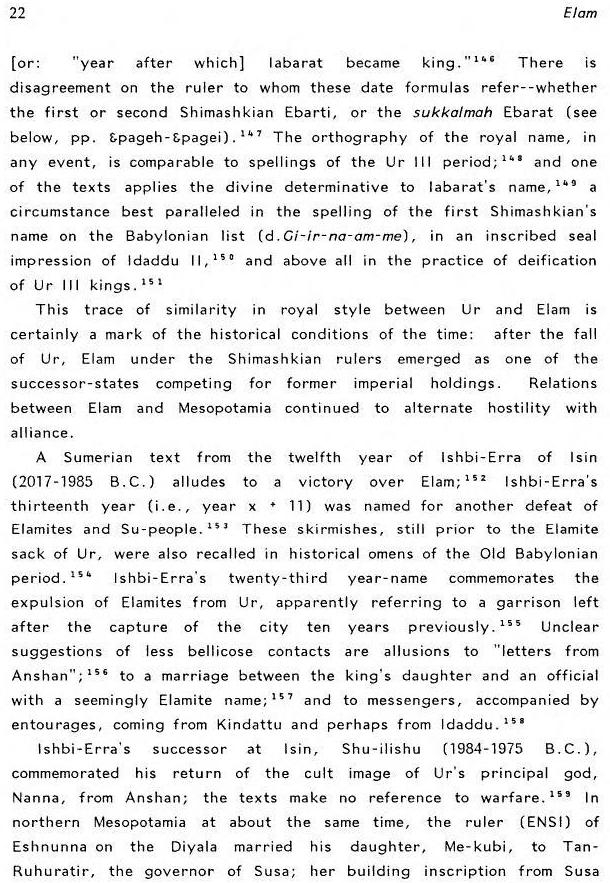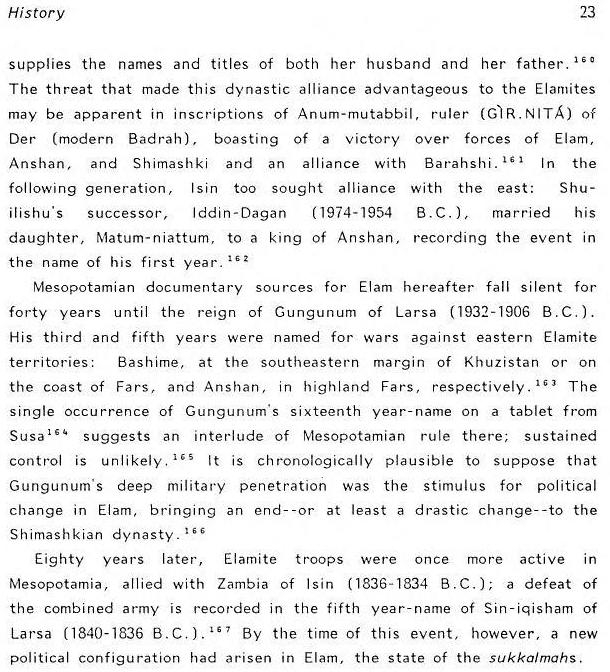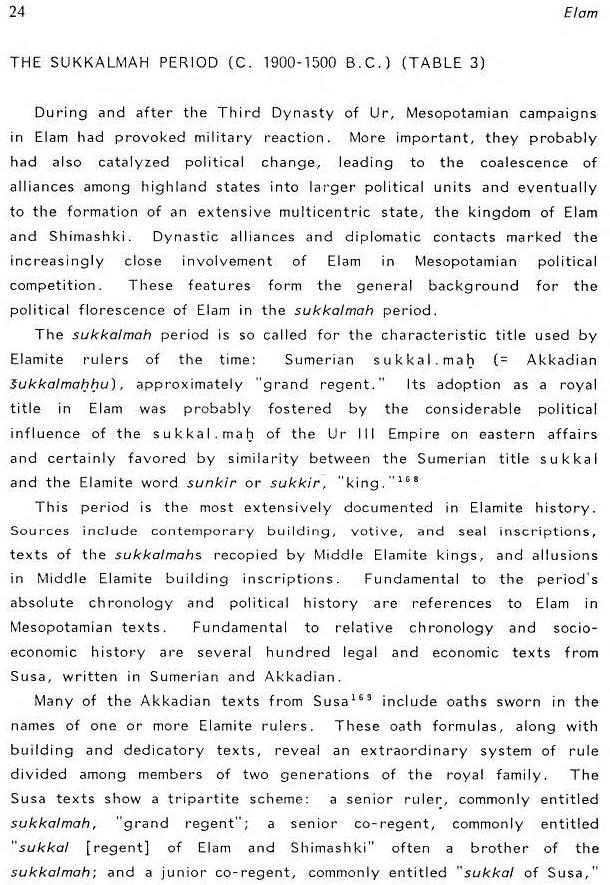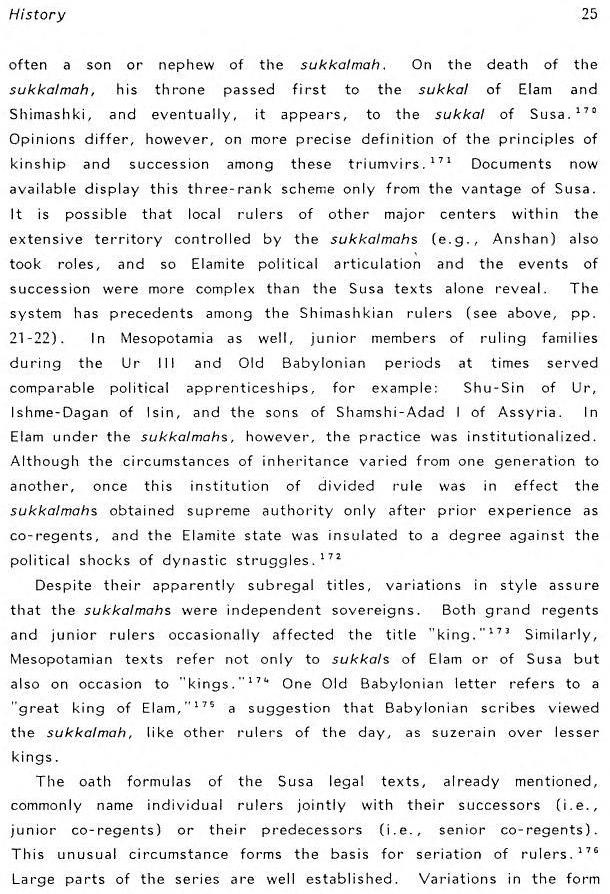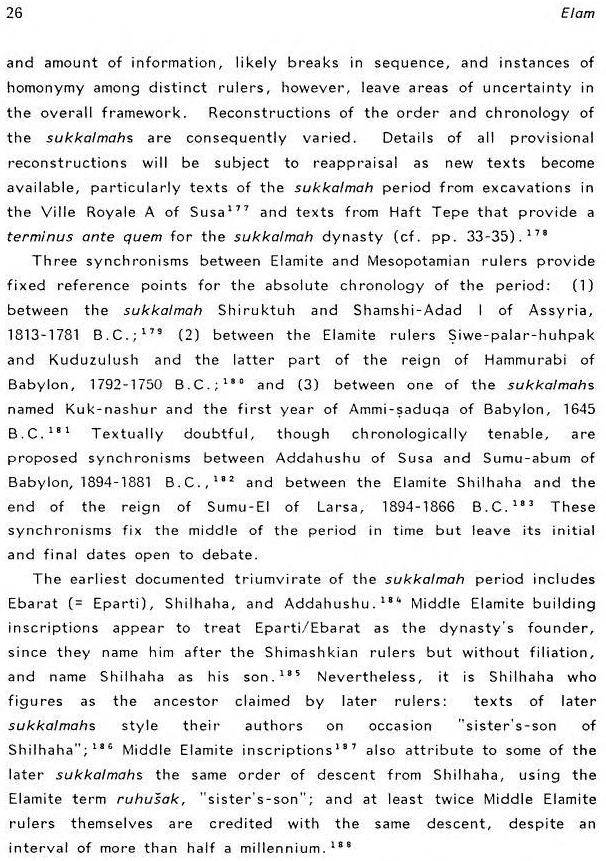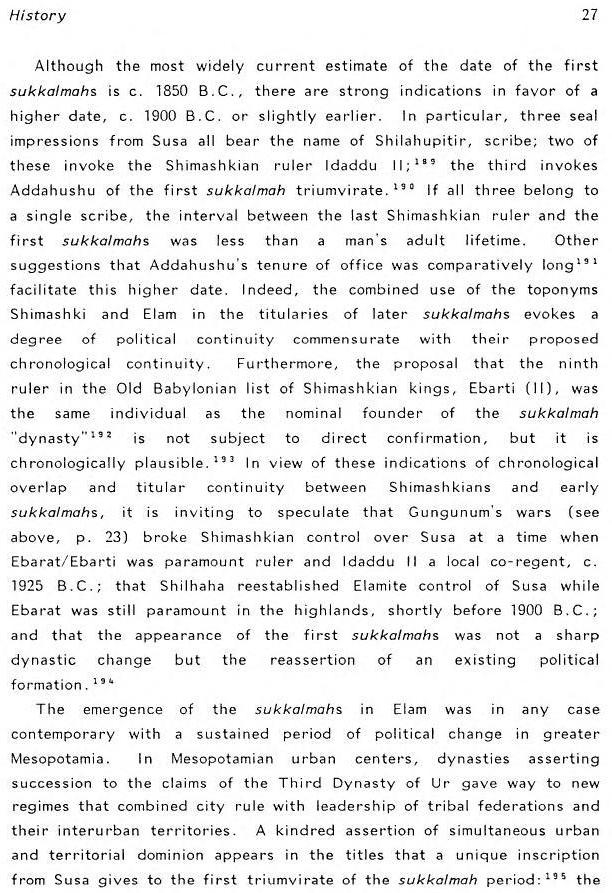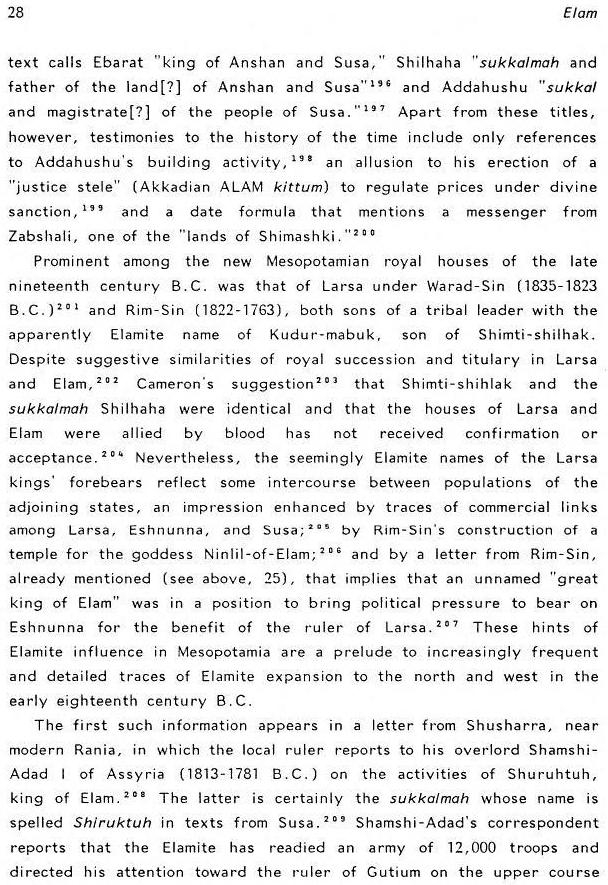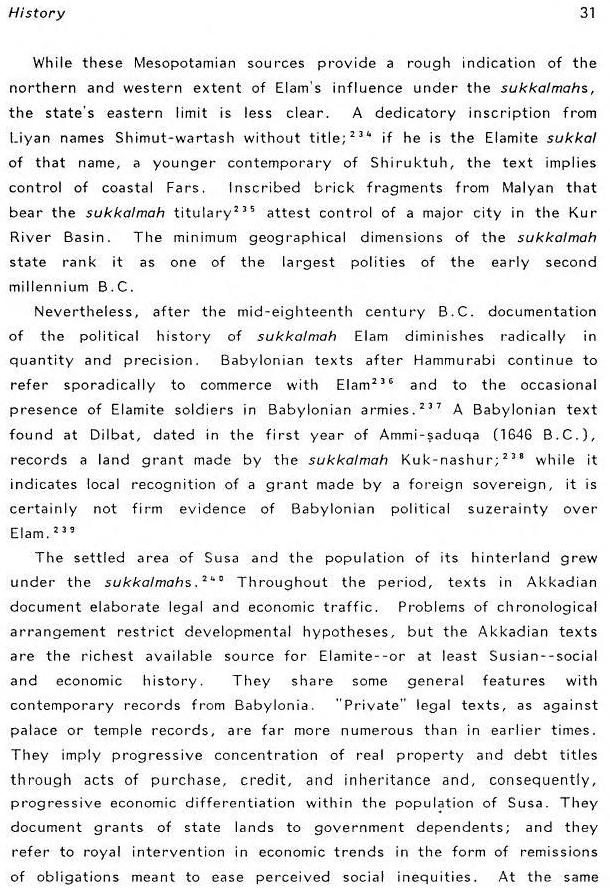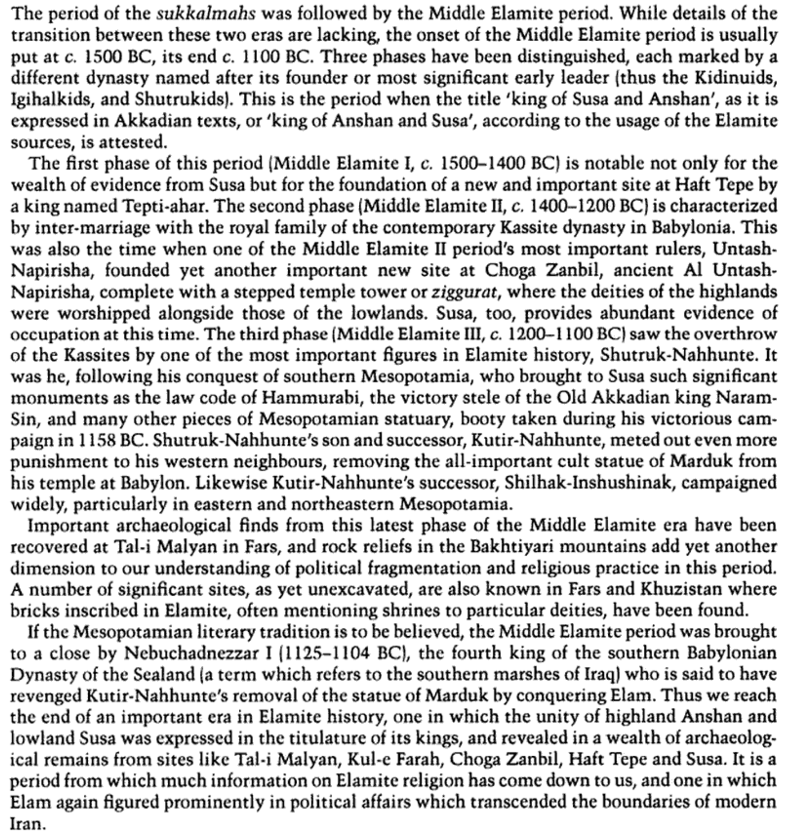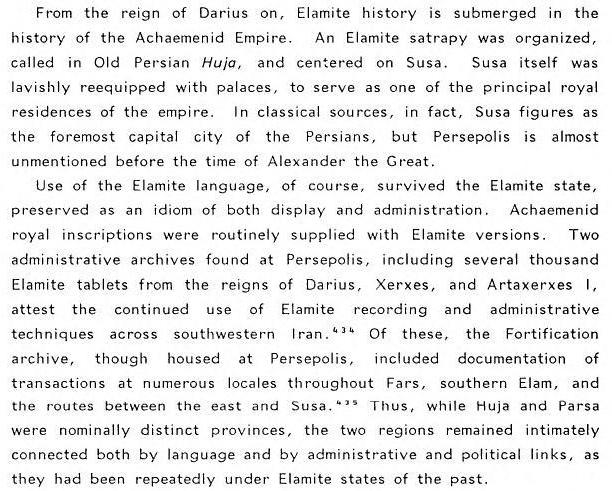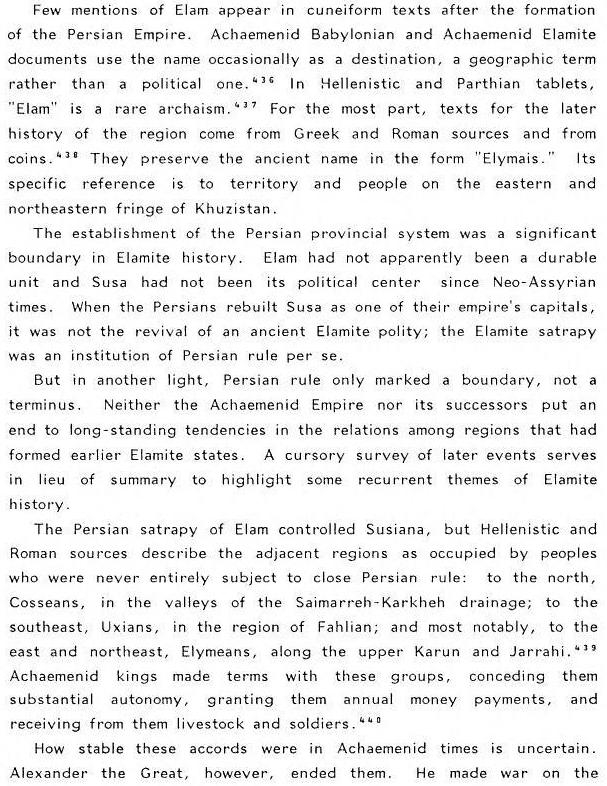|
Other Archaeological Sites / The Neolithic of the Levant (500 Page Book Online) Ancient Elam or ʻĘylâm (Hebrew עֵילָם Transliterated ‘ę·lām) in Iran
ELAM in the Perseus Digital Library (Tufts University) Selected Excerpts on Elam (A) Encyclopedia Judaica --- Hayim Tadmor / Daniel C. Snell --- 2nd edition (2007)
(B)
The Uruk Expansion: Cross Cultural Exchange in Early Mesopotamian Civilization
(C) Cyclopaedia of Biblical, theological, and ecclesiastical literature
(3) The History of Elam --- Encyclopaedia Iranica --- Article by Francis Vallat (2011) Language: The first indigenous writing system from Iran is called Proto-Elamite; this derived writing system originated from the Uruk invention of writing in southern Mesopotamia during the middle of the 4th millennium BC and was in use in the Susiana plain and the Iranian highlands between circa 3050 and 2900 B.C.E. --- a period generally considered to correspond to the Jamdat Nasr/Uruk III through Early Dynastic I periods. This span is represented in Iran by levels 16-14B in the Acropole at Susa as well as Tepe Yahya (Yaḥyā) IVC -- Tepe Sialk (Sīālk) IV2 and Late Middle Banesh (Baneš). The known corpus of inscriptions consists of some 1600 tablets, the vast majority unearthed at Susa. Proto Elamite was long thought of as a precursor to a (hypothetical) indigenous Elamite writing system called Linear Elamite. Both remain largely un-deciphered. The proto-Elamite script remained in use until about 2700 (sic) B.C.E. (See Period IV B at Tepe Yaḥyā) but it was in the little-known period that followed --- between the end of the Proto-Elamite period and the establishment of the dynasty of Awan --- that Elam began to emerge from anonymity. The first attestation of the name of the kingdom is in a text of the king Enmebaragesi of Kish who ruled about 2650 B.C.E. But it is only from the beginning of the Akkadian period that Elam really enters into history (3 4 5). The Awan Dynasty (circa 2400-2100 B.C.E.) was partially contemporary with that of Sargon of Akkad (2334-2279 B.C.E.) and its last king Puzur-Inšušinak is thought to have reigned in the time of Ur-Nammu (2112-2095 B.C.E.) --- founder of the Third Dynasty of Ur. At that point the information in the sources becomes more explicit for the Mesopotamians were attracted by the natural riches of the Persian plateau that they themselves lacked (wood -- stone -- metals). The records of their military campaigns provide important indications for the reconstruction of the history and geography of Elam (3).
For a long time scholars confused Elam with Susiana, equivalent to the plain and lower Zagros foothills in the present Persian province of Ḵūzestān. Two important factors have recently modified this understanding however. First Tal-e Malyan (Mālīān) in Fārs has been identified as the ancient center of the component kingdom of Anshan and second it has been established that Susa and Elam were distinct entities. In fact during the several millennia of its history the limits of Elam varied not only from period to period but also with the point of view of the person describing it. For example Mesopotamian sources permit establishment of a relatively detailed map of Elam in the late 3rd millennium B.C.E. owing in particular to the “Geography of Sargon of Akkad” (circa 2300 B.C.E.) --- a Neo-Assyrian representation of the extent of his conquests. It seems that Mesopotamians in the late 3rd millennium B.C.E. considered Elam to encompass the entire Persian plateau which extends from Mesopotamia to the Kavīr-e Namak and Dašt-e Lūt and from the Caspian to the Persian Gulf. Elamite cultural if not political influence in that period extended far beyond those limits however; reaching Central Asia -- Afghanistan -- Pakistan and the southern shores of the Persian Gulf. It should be emphasized that during the last centuries of the 3rd millennium Susiana was sometimes a political dependency of the Mesopotamian empires centered first on Akkad and later on Ur and was included only for a brief period in the Elamite confederation which embraced the kingdoms of (1) Awan (probably in the Zagros) -- (2) Simaški (in Assyrian Šimaški probably extended from Kermān to the Caspian) and (3) Anshan (the present province of Fārs with its natural outlet to the Persian Gulf in the vicinity of Būšehr). Furthermore this entire definition was Mesopotamian. For the people of the Persian plateau, the Awanites and Simaškians, Elam meant the country of Anshan (3).
When the Elamites in alliance with the people of Susiana brought an end to the empire of Ur in 2004 B.C.E. they annexed Susiana where the Epartid or [later] sukkalmah (grand regent) dynasty was founded by the ninth king of Simaški (Eparti II); the dynasty thus had its origins on the plateau (3). The mechanics of the transformation of the line of Shimashkian kings into the line of Susian sukkalmahs is obscure but one thing is certain: under the sukkalmahs, particularly those of the late nineteenth and early eighteenth centuries BC, the prestige and influence of Elam throughout Western Asia was unprecedented (Page 160 in 2).
Notes: ---> Shu-sin (2037-2029 BC) was king of Sumer and Akkad and the penultimate king of the Third Dynasty of Ur (2112–2004 BC). Drehem or ancient Puzrish-Dagan is a suburb of Nippur and is the best known city of the so-called redistribution centers of the Neo Sumerian period of Mesopotamian history. Livestock (cattle -- sheep and goats) of the state was centralized at Drehem and redistributed to the temples, its officials and the royal palaces of Sumer. The city was founded by Shulgi (2094–2047 BC) king of the Third Dynasty of Ur and had a certain importance only for a few decades since the archives stop after the reign of Amar-Sin --- successor of Shulgi. Akkadian and Sumerian MAR.TU or Amurru are used in texts referring to the Amorites. <---
(1) Elam: Surveys of political History and Archaeology by Elizabeth Carter and Matthew Stolper
As for the “kings of Anshan and Susa” of the Middle Elamite period (1500-1100 B.C.E.), according to the available documents, they controlled at least the territory of the present-day provinces of Ḵūzestān and Fārs with Būšehr (3).
(8) Neo-Elamite Period (circa 1100 – 539 BC): SEE WikiPedia
The Achaemenid period (539-331 B.C.E.)
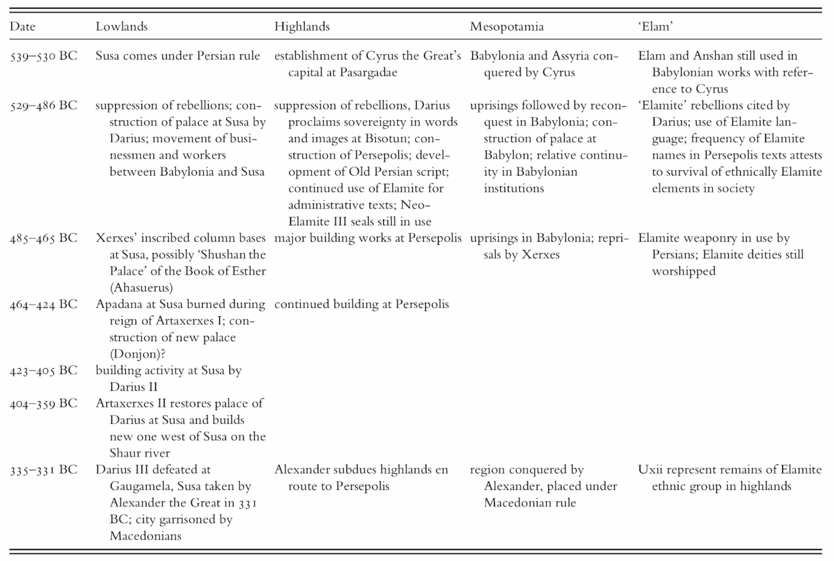 Page 347 in The Archaeology of Elam: Formation and Transformation of an Ancient Iranian State (2015) With the Achaemenids in general and Darius I in particular Susa regained its previous greatness but Elam lost its independence, becoming the third “province” of the empire after Persis and Media. Curiously in that period though the country was called Elam (Elamite Hatamtu -- Akkadian NIM) in the sources; in Old Persian it was called Susiana (Uja). In the time of Cyrus the Great Susa eclipsed the other capitals like Anshan and Pasargadae; and even Persepolis which was founded by Darius himself and Ecbatana. Elam was absorbed into the new empire which changed the face of the civilized world at that time (3).
ELYMA´IS (Ἐλυμαία: Hellenic form of Elam) in the Perseus Digital Library (Tufts University) ELYMAIS: The available sources show that what was called Elymais by classical writers existed in southwestern Persia in the territories of Ḵūzestān (Susiana) from the second century B.C.E. to the early third century C.E. Elymais was sometimes independent and occasionally a vassal state of the Parthians. Strabo describes Elymais as a mostly rugged country bordering on Susis and inhabited by brigands who waged war against the Susians (Strabo 15.3.12 and 16.1.17) (6).
And bordering on Susis is Elymaďs most of which is rugged and inhabited by brigands; It is clear from this account that the homeland of the Elymaeans comprised only a part of the present province of Ḵūzestān. To the Assyrians and the Neo-Babylonians the whole of these lands were Elam. The Achaemenids identified Ḵūzestān as the satrapy of hŪvja (Roland Kent in Page 175 of Old Persian Grammar -- Texts -- Lexicon -- 1950) and to the Seleucid successors of Alexander it was the satrapy of Susiana with its capital at Susa. The Elamites of the second millennium B.C.E. differentiated between the region or district of Susa which comprised the Ḵūzestān plain and the separate district of Elam proper. In Sumerian this “regional” Elam was written with the sign NIM which conveyed the idea of “highland”. In the present context Elam is most probably to be identified with the foothills and valleys of the Zagros mountains which rise to the east and north of the Ḵūzestān plain (6). It has been suggested that the Elymaeans were of Persian origin and that they had been established in this part of Ḵūzestān since the eighth century B.C.E. But the hostility shown by the Elymaeans to the Achaemenid kings and the fact that the Elymaeans worshipped non-Iranian gods would seem to suggest that the people of Elymais were descendants of the traditional Elamite inhabitants of these regions. A comparative study of Elymaean religious iconography supports the view that the Elymaeans worshipped Semitic gods of Babylon and Assyria; possibly in syncretization with traditional Elamite deities. The conquest by the Sasanian Empire under Ardašīr in 221 C.E. marked the end of Elymais as a political state (6).
(1) Elam: Surveys of political History and Archaeology by Elizabeth Carter and Matthew Stolper --- Near Eastern Studies Volume 25 (1984)
(2) The Archaeology of Elam: Formation and Transformation of an Ancient Iranian State by D. T. Potts (2015)
(3) ELAM i The history of Elam in the Encyclopaedia Iranica Article by Francis Vallat (2011)
(4) ELAM iii Proto-Elamite in the Encyclopaedia Iranica Article by R. K. Englund (2011)
(5) Proto-Elamite --- Cuneiform Digital Library Initiative
(6) ELYMAIS in the Encyclopćdia Iranica Article by John F. Hansman (2011)
(7) A Political History of the Achaemenid Empire by M. A. Dandamaev (1989)
(8) Elam --- WikiPedia
|
